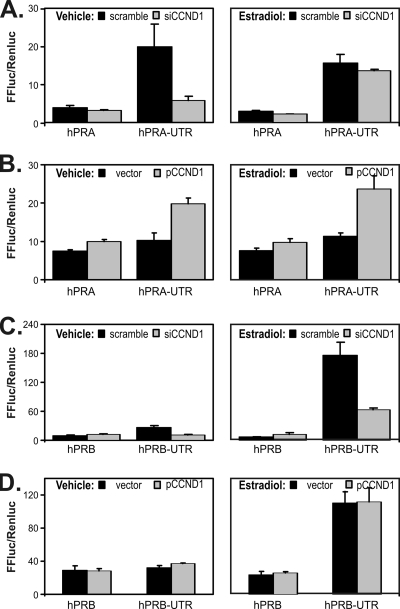FIG. 7.
The 3′ ERE of the PR gene differentially activates PR isoform-specific promoters, which respond to estrogen and cyclin D1. We combined the PR 3′ UTR (UTR) with PR reporters containing its individual A and B promoters. The 3′ UTR was cloned into PR A (hPRA) and PR B (hPRB) plasmids as indicated. We performed reporter assays in the absence (left panels) and presence (right panels) of estradiol as described in the previous figure legends. (A) Levels of activity induced by the hPRA and hPRA-UTR reporters were compared in the presence of a scrambled control siRNA (scramble) and in the presence of the siCCND1 oligonucleotide (siCCND1). (B) Levels of activity induced by the hPRA and hPRA-UTR reporters were compared in the absence (vector) and presence (pCCND1) of transfected cyclin D1. (C) Levels of activity induced by the hPRB and hPRB-UTR reporters were compared in the presence of a scrambled control siRNA (scramble) and in the presence of the siCCND1 oligonucleotide (siCCND1). (D) Levels of activity induced by the hPRB and hPRB-UTR reporters were compared in the absence (vector) and presence (pCCND1) of transfected cyclin D1. FFluc/Renluc, levels of firefly luciferase from the progesterone receptor plasmids compared to those of an internal pCMV-renilla control.

